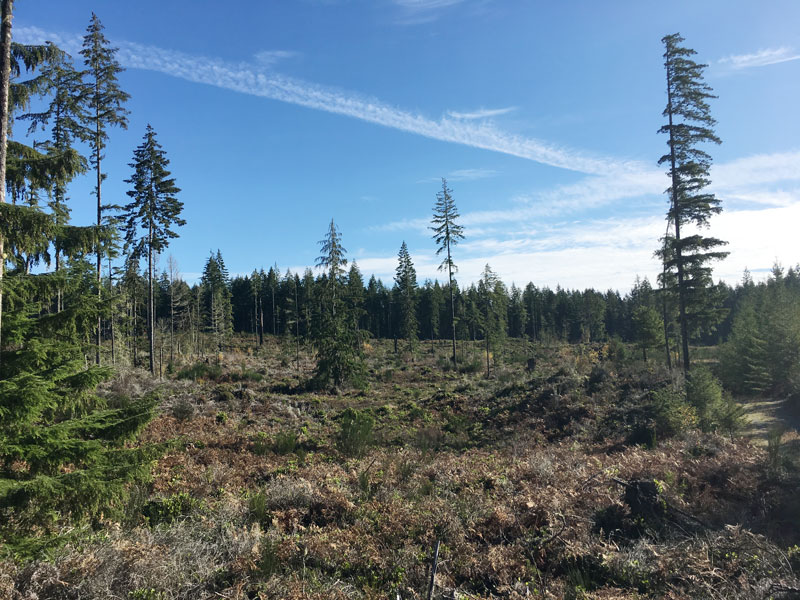
TIMBER
Our mission at Alpine Evergreen is to efficiently produce a timber crop while achieving an ecological and aesthetic balance. The timber is sold to domestic mills in the Puget Sound basin and is often exported to Japan, China, and South Korea.
Douglas fir is the dominant native tree species across Alpine’s timber stands. The gravelly soil in our area causes the timber to grow relatively slow, resulting in very strong and beautiful lumber. Douglas fir timbers are a preferred material in exposed post and beam structures in the U.S.A. and Japan. Mixed stands of wet-tolerant evergreens like cedar, along with various hardwood species grow in low lying areas and adjacent to streams where soil moisture is greatest. Hemlock is scattered throughout the tree farm, but is not a species of focus for us due to the relatively poor wood quality and susceptibility to disease, freeze cracking, and decay. All combined, the minor species represent 5-10% of the timber volume growing on the land. The glacial outwash soils of the Kitsap Peninsula and central Puget Sound are Douglas fir ground.
The forest and fish rules of Washington State require a number of wildlife reserve and green-up trees be retained after harvest. Alpine typical leaves hemlock, non-merchantable cedar, and large madrone in addition to scattered Douglas fir. These trees serve multiple purposes. They provide a seed source for stand diversity, offer varied wildlife habitat, and meet the criteria for leave trees established by the State.
TIMBER THINNING
You may come across stands of young timber where it seems like half of the trees have been cut down and left to decay. This is likely an area where a pre-commercial thinning operation was completed. This is done on stands in the age range of 12-20 years old to achieve and optimal stocking level of trees on 12-14’ spacing, or 225-300 trees per acre.
Commercial thinning is a forest practice where the trees harvested are sold to become lumber or pulp fiber. It is commonly prescribed on overly dense stands between the ages of 27 and 40 years old. The remaining stand would have trees at approximately 14-16’ spacing.
“The true meaning of life is to plant trees, under whose shade you don’t expect to sit” – Nelson Henderson
LUMBER TREE SPECIES
Douglas fir – Pseudotsuga menziesii
Hemlock fir – Tsuga heterophylla
Red alder – Alnus rubra
Western red cedar – Thuja plicata
Lodgepole pine – Pinus contorta
Noble fir – Abies procera
REFORESTATION
Standard practice on the tree farm is planting Douglas fir seedlings at a rate of 350 trees per acre, resultant spacing is approximately 11 feet on center. Western red cedar (RC) is inter-planted in lower-moist locations where cedar had existed prior to harvest, or where conditions suggest viability.
